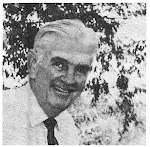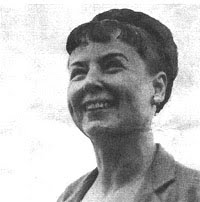Wednesday, October 30, 2013
Painting Graffiti on Grandpa’s Wall
Children are prone to writing and painting on white walls, but rarely do the kids go on to become professional illustrators. Rarer still is having their youthful artwork saved for posterity.
Circumstances favored Holling’s early painting, but the story begins with the Leslie Area Historical Museum in Michigan. In Joan Hoffman’s words, it was begun by a director who had to leave for reasons of ill health.
Three people now work to inventory Holling-related artifacts, art and writing. Among the first acquisitions were these murals. But Joan Hoffman puts the story best in her own words:
“Holling painted these two murals on the upstairs closet walls in his grandparents' Leslie home when he was 16. Holling was living there while going to Leslie High School. Years later, when that house was sold, the new owners wanted to remodel the upstairs [and] cut the two murals out of the plastered walls. The larger of the two included not only a portion of the plastered wall with the painting but the lath and studs as well. The owners kept these murals. When their daughter grew up, she and her husband bought the house and they continued to save them. The daughter, Lynnette Roberts, became a secretary at the Leslie middle school.
“Steve Hainstock wanted to start a historical society and museum in Leslie. Somehow he knew about these murals and mentioned to Lynnette about my interest in Holling. Through Steve's efforts, in 2007, these murals were given as a gift to the Leslie Area Historical Society and became the center piece of our first display. They were displayed in a glass case in the town's dressmaker's shop.
“Many things have changed since then. The museum is in a different location and it contains many of the area's historical treasures in addition to Holling. but one of the first things seen when you come through the museum door is those two murals Holling painted in October, 97 years ago.
“’The Fatal March’ may have been painted from personal experience. Holling wrote in one of his letters that he once ran away from home and got a spanking. Holling loved rail fences and nature's beauty as painted in ‘Autumn's Return.’”
Thursday, October 24, 2013
Memories of Experience Form the Writing
Writers are regularly told to write what they know. This was a fundamental in Holling’s writing and illustration, which more often than not was built on the basis of personal experience.
I was struck by this again in reading Hazel Gibb Hinman’s thesis The Lives and Works of Holling Clancy Holling (1958).
As a boy, Holling Clancy (his surname at birth) was raised in Jackson County and Au Sable in northeastern part of Michigan. Au Sable was populated by French-Canadian, Scandinavian and native American lumberjacks. You’ll remember that Minn, the turtle in Minn of the Mississippi was caught and befriended by Au Sable Indian boy.
Hinman says it was from boyhood experiences like this that Holling learned “the difference between the cloven ox hoof and the solid hoof of the horse, much as in the marginal sketches in the Book of Cowboys.” That difference was why oxen were used for pulling tree stumps and wouldn’t get mired in the mud. This is the sort of natural history most children today would not know if it weren’t for Holling’s books.
For reasons of his father Bennett’s health, the family moved to the ancestral farm in Holling Corners. Summertime in Holing Corners allowed young Holling the chance to listen to his grandfather’s hired hand, Arza Earl. Arza appears in Tree in the Trail as “the owner of the leather shop from whose porch is viewed the main street of Independence, Missouri: ARZA EARL MAKES HARNESS YOUR WORST MULE CAN’T BUST” is the dark sign at the top of the full-page illustration (above) in chapter 12.
The farm life is immortalized time after time in Holling’s writing. Papa Bennett, as his father was known, had a giant iron kettle he used for cooking feed for the hogs. It was so big, Hinman reports, that three or four children could hide in it when playing hide-and-seek. Once, after cleaning the kettle, Holling curled up in it and took a nap, Hinman says. This experience appears in Seabird as an exhausted Ezra finished cleaning the kettle used for cooking down the whale oil and “slid headfirst into an empty try-pot. His polishing rag gave the iron a silver sheen. Then he flopped into the other kettle…. Ah! That try-pot felt so warm, so snug—.” (page 26)
When the Clancy family moved to Holing Corners, the household good were packed in finely made wooden crates. A cousin later used the boxes to construct a fishing shanty on nearby Pleasant Lake. This idea contributed to Paddle-to-the-Sea as the little canoe is trapped in the ice. Fishermen pulling their shanties on runners freed Paddle-to-the-Sea and sent it on its way.
A biographer could have a field day tracking all of the references in Holling’s life to see where they appear in his books — a puzzle that still invites the close reader.
The farm life is immortalized time after time in Holling’s writing. Papa Bennett, as his father was known, had a giant iron kettle he used for cooking feed for the hogs. It was so big, Hinman reports, that three or four children could hide in it when playing hide-and-seek. Once, after cleaning the kettle, Holling curled up in it and took a nap, Hinman says. This experience appears in Seabird as an exhausted Ezra finished cleaning the kettle used for cooking down the whale oil and “slid headfirst into an empty try-pot. His polishing rag gave the iron a silver sheen. Then he flopped into the other kettle…. Ah! That try-pot felt so warm, so snug—.” (page 26)
When the Clancy family moved to Holing Corners, the household good were packed in finely made wooden crates. A cousin later used the boxes to construct a fishing shanty on nearby Pleasant Lake. This idea contributed to Paddle-to-the-Sea as the little canoe is trapped in the ice. Fishermen pulling their shanties on runners freed Paddle-to-the-Sea and sent it on its way.
A biographer could have a field day tracking all of the references in Holling’s life to see where they appear in his books — a puzzle that still invites the close reader.
I was struck by this again in reading Hazel Gibb Hinman’s thesis The Lives and Works of Holling Clancy Holling (1958).
As a boy, Holling Clancy (his surname at birth) was raised in Jackson County and Au Sable in northeastern part of Michigan. Au Sable was populated by French-Canadian, Scandinavian and native American lumberjacks. You’ll remember that Minn, the turtle in Minn of the Mississippi was caught and befriended by Au Sable Indian boy.
Hinman says it was from boyhood experiences like this that Holling learned “the difference between the cloven ox hoof and the solid hoof of the horse, much as in the marginal sketches in the Book of Cowboys.” That difference was why oxen were used for pulling tree stumps and wouldn’t get mired in the mud. This is the sort of natural history most children today would not know if it weren’t for Holling’s books.
For reasons of his father Bennett’s health, the family moved to the ancestral farm in Holling Corners. Summertime in Holing Corners allowed young Holling the chance to listen to his grandfather’s hired hand, Arza Earl. Arza appears in Tree in the Trail as “the owner of the leather shop from whose porch is viewed the main street of Independence, Missouri: ARZA EARL MAKES HARNESS YOUR WORST MULE CAN’T BUST” is the dark sign at the top of the full-page illustration (above) in chapter 12.
The farm life is immortalized time after time in Holling’s writing. Papa Bennett, as his father was known, had a giant iron kettle he used for cooking feed for the hogs. It was so big, Hinman reports, that three or four children could hide in it when playing hide-and-seek. Once, after cleaning the kettle, Holling curled up in it and took a nap, Hinman says. This experience appears in Seabird as an exhausted Ezra finished cleaning the kettle used for cooking down the whale oil and “slid headfirst into an empty try-pot. His polishing rag gave the iron a silver sheen. Then he flopped into the other kettle…. Ah! That try-pot felt so warm, so snug—.” (page 26)
When the Clancy family moved to Holing Corners, the household good were packed in finely made wooden crates. A cousin later used the boxes to construct a fishing shanty on nearby Pleasant Lake. This idea contributed to Paddle-to-the-Sea as the little canoe is trapped in the ice. Fishermen pulling their shanties on runners freed Paddle-to-the-Sea and sent it on its way.
A biographer could have a field day tracking all of the references in Holling’s life to see where they appear in his books — a puzzle that still invites the close reader.
The farm life is immortalized time after time in Holling’s writing. Papa Bennett, as his father was known, had a giant iron kettle he used for cooking feed for the hogs. It was so big, Hinman reports, that three or four children could hide in it when playing hide-and-seek. Once, after cleaning the kettle, Holling curled up in it and took a nap, Hinman says. This experience appears in Seabird as an exhausted Ezra finished cleaning the kettle used for cooking down the whale oil and “slid headfirst into an empty try-pot. His polishing rag gave the iron a silver sheen. Then he flopped into the other kettle…. Ah! That try-pot felt so warm, so snug—.” (page 26)
When the Clancy family moved to Holing Corners, the household good were packed in finely made wooden crates. A cousin later used the boxes to construct a fishing shanty on nearby Pleasant Lake. This idea contributed to Paddle-to-the-Sea as the little canoe is trapped in the ice. Fishermen pulling their shanties on runners freed Paddle-to-the-Sea and sent it on its way.
A biographer could have a field day tracking all of the references in Holling’s life to see where they appear in his books — a puzzle that still invites the close reader.
Subscribe to:
Comments (Atom)



.jpg)






